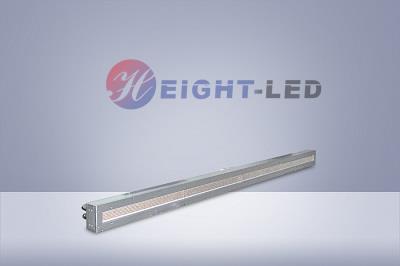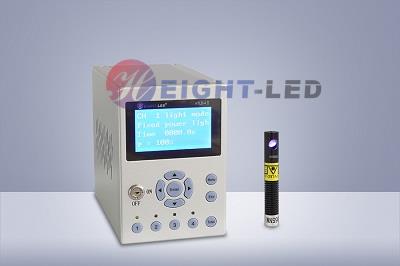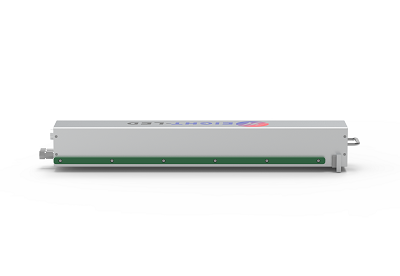What is UVLED curing system and how long does it take for UV coating to cure?
A UV-LED curing system is a technological setup that includes UV-LED curing light sources, associated control electronics, and sometimes conveyors or platforms to facilitate the curing process. It is designed to efficiently and rapidly cure UV-sensitive materials using ultraviolet (UV) light emitted by light-emitting diodes (LEDs) in the UV spectrum. UV-LED curing systems are widely used in industries where precise and quick curing of materials is essential.

The components of a UV-LED curing system typically include:
UV-LED Curing Light Source: This is the core component of the system. It consists of an array of UV-LEDs that emit UV light within a specific wavelength range. These LEDs are carefully chosen to match the absorption spectrum of the photoinitiators in the UV-sensitive materials being cured.
Control Electronics: The system includes control circuitry that manages the intensity and duration of the UV light emitted by the LEDs. This allows for precise control over the curing process, ensuring optimal results.
Cooling Mechanism: UV-LEDs can generate heat during operation, so cooling mechanisms such as fans or heat sinks are often incorporated to maintain the LEDs' performance and lifespan.
Optics and Light Distribution: Some UV-LED curing systems employ optics to evenly distribute the UV light over the target area, ensuring uniform curing.
Conveyor or Platform: In some applications, especially in industrial settings, UV-LED curing systems may include conveyors or platforms that move the UV-sensitive materials through the curing area. This ensures consistent exposure to UV light and efficient curing of larger quantities of materials.
Safety Features: UV light can be harmful to the eyes and skin. UV-LED curing systems often incorporate safety features such as shielding, interlocks, and alarms to protect operators from accidental exposure.
Wavelength Options: Depending on the materials being cured, UV-LED curing systems might offer multiple wavelength options to accommodate different photoinitiator sensitivities.

How long does it take for UV coating to cure?
UV Coating Formulation: Different UV coatings have varying photoinitiators and formulations that respond to specific UV wavelengths. This can affect how quickly the coating cures under the appropriate UV light source.
Coating Thickness: Thicker layers of UV coating may require longer curing times to ensure complete and thorough curing throughout the coating.
UV Light Intensity: The intensity of the UV light source significantly impacts the curing time. Higher-intensity UV lights can achieve faster and more complete curing.
Substrate: The type of substrate being coated can influence the curing time. Substrates that absorb UV light might require longer curing times to ensure proper curing at the coating-substrate interface.
Curing Equipment: The type of UV curing equipment being used, whether it's a UV-LED curing system or a traditional UV lamp, can affect the curing time and efficiency.
As a rough estimate, UV coatings can often cure within a range of a few seconds to a couple of minutes under proper UV light exposure. However, it's essential to follow the manufacturer's recommendations for the specific UV coating being used, as they provide guidelines for the optimal curing conditions.

